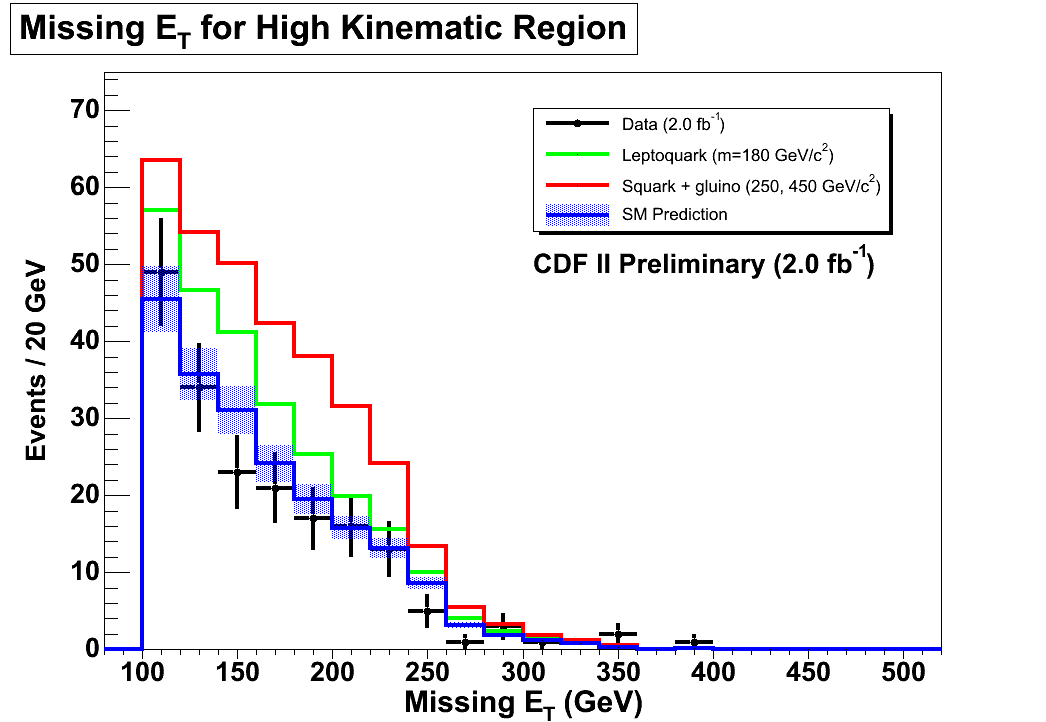The above concept marks an interesting turn of events: the years of the glorification of charged leptons as the single most important tools for the discovery of rare production processes appears behind us. The W and Z discovery in 1983 by UA1 at CERN, or the top quark discovery by CDF and DZERO in 1995 at Fermilab, would have been impossible without the precise and clean detection of electrons and muons. However, with time we have understood that missing energy may be a more powerful tool for new discoveries.
Missing energy arises when a violent collision between the projectiles -protons against antiprotons at the Tevatron collider, or protons against protons at the world's most powerful accelerator, the LHC- produces an asymmetric flow of energetic bodies out of the collision point in the plane orthogonal to the beams: a transverse imbalance. This is a clear signal that something is leaving the detector unseen. And it turns out that there is a host of new physics signals which can do precisely that.
A large amount of missing transverse energy may be the result of the decay of a leptoquarks into jets and neutrinos, when the latter leave undetected; or from the silent escape of a supersymmetric neutral particle -the neutralino- produced in the chain of decays following the production of squarks and gluinos; or it may even be due to the escape of particles in a fourth dimension of space -an alternative dubbed "large extra dimensions".
The CDF Collaboration has recently produced the results of a search for a quite infrequent signature, which might be contaminated by the above new physics processes. The exclusive signature of large missing transverse energy and two energetic jets of hadrons is sufficiently rare in the context of the standard model that even a small number of events due to new physics would stick out clearly.

The figure above shows exactly that: in a sample of two inverse femtobarns of collisions, a couple hundred events with two jets and large missing energy are binned in a histogram of the amount of missing transverse energy they possess. You can see that the data (the black crosses) distribute as is predicted by the sum of standard model processes (the blue histogram with a error band). Two alternatives are overlaid: the additional production of pairs of scalar leptoquarks decaying each into a jet and a neutrino (in green), or the production of squarks and gluinos by a particular supersymmetric model, the so-called "point S2" (in red).
Since it is clear that there is no excess in the data, CDF can use that information to set limits to all models which would produce a significant excess. The details of the exclusion limits are discussed in the public web page of the search.




Comments